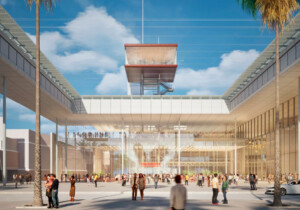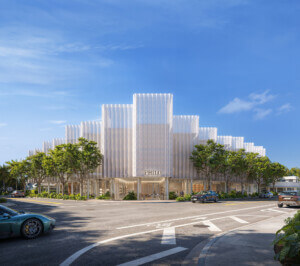The Architect’s Newspaper’s April 2017 issue takes a deep dive into Florida to coincide with the upcoming AIA Conference on Architecture in Orlando (April 27 to 29). You can see all those articles on this page. Here, Senior Editor Matt Shaw’s editorial from that issue highlights what we’ve explored in the Sunshine State.
Since The Architect’s Newspaper (AN) switched from four weekly regional editions to one single national monthly, we have worked tirelessly to maintain our in-depth regional coverage of architecture, even if it is packaged differently. But sometimes we miss the intense focus on one region for one issue. That is why for our AIA special issue, which coincides with the AIA Conference on Architecture in Orlando, Florida, we decided to make a Florida regional issue, in the spirit of our old East, Midwest, West, and Southwest editions. We could call it Southeast, but there is so much building and development going on in Florida that we wanted to give it the classic AN treatment by itself.
What exactly is happening there?
Most of the high-profile development is in Miami, where The Four Seasons stands as the tallest building in the city at 789 feet, but will soon be surpassed by the 830-foot-tall Panorama Tower, and soon after that both will likely be passed by a wave of supertalls that are in the planning process. There are nearly a dozen proposals in various states of planning, including World Trade Center of the Americas, The Towers by Foster + Partners, KPF’s One Bayfront Plaza, and Skyrise Miami, a.k.a. “The Eiffel Tower of the Magic City.” The FAA has never approved a building over 1,049 feet, so that is the designated height of many, including the latter three listed above.
This boom shows that while the condo market in South Florida may actually be cooling off, the cities are not. In our feature, we profile Miami from several angles, showing a complex metropolis layered with architecture and design activity. The latest wave of development has brought with it a new civic-mindedness to a city that is struggling to escape its car-centric culture and is slowly growing to offer more urbane experiences through infrastructure, density, and advances in technology. The re-urbanization of Miami parallels many other places, but it has its own characteristic development patterns.
The paradox of building directly in the face of sea-level rise may seem daunting, especially as the governor of Florida continues to deny climate change and forbids government employees from using the term. Luckily, there is hope: A sub-state organization of counties and municipalities are taking the lead without state help. Since 2009, the counties of Broward, Miami-Dade, Monroe, and Palm Beach have led the Southeast Florida Regional Climate Change Compact. Other partners include the Institute for Sustainable Communities, South Florida Water Management District, The Nature Conservancy – Florida Chapter, and the Florida Climate Institute. Along with a collection of cities and towns, they have been working together—and meeting annually—to coordinate mitigation and adaptation activities across county lines, as well as address funding and policy issues.
In Miami, there is also work being done to combat the social issues of sea-level rise threatening the city, as there is real concern that up to 50 percent of the land will not be habitable in the coming decades. What will happen if this is true? Not only would real estate become unusable, but higher ground that is now affordable could become unaffordable for those who live there, if that territory becomes more desirable to those displaced along the shore. To offset that, many are looking to Philadelphia’s anti-gentrification “Development Without Displacement” methods such as the tax exemptions in the Longtime Owner-Occupant Program (LOOP), and other alternative ownership incentives and models, and applying them to a GIS-based plan for the city.
These contradictory forces—the ocean and the city—may pose a threat to Miami if no action is taken, but they are also what makes it so desirable. The landscape and the resultant tourism industry—hotels, malls, resorts, beaches, nightlife—fuels a tropical paradise with urban, suburban, and rural issues as compelling and complex as anywhere.
Because we cover Florida regularly, we have some past coverage that might interest those who enjoy this issue. Click here for a list of past articles.
Special thanks to landscape architect Walter Meyer of Local Office Landscape Architecture whose help was indispensable for this issue.










